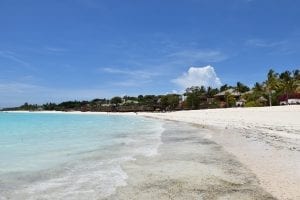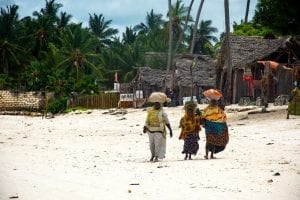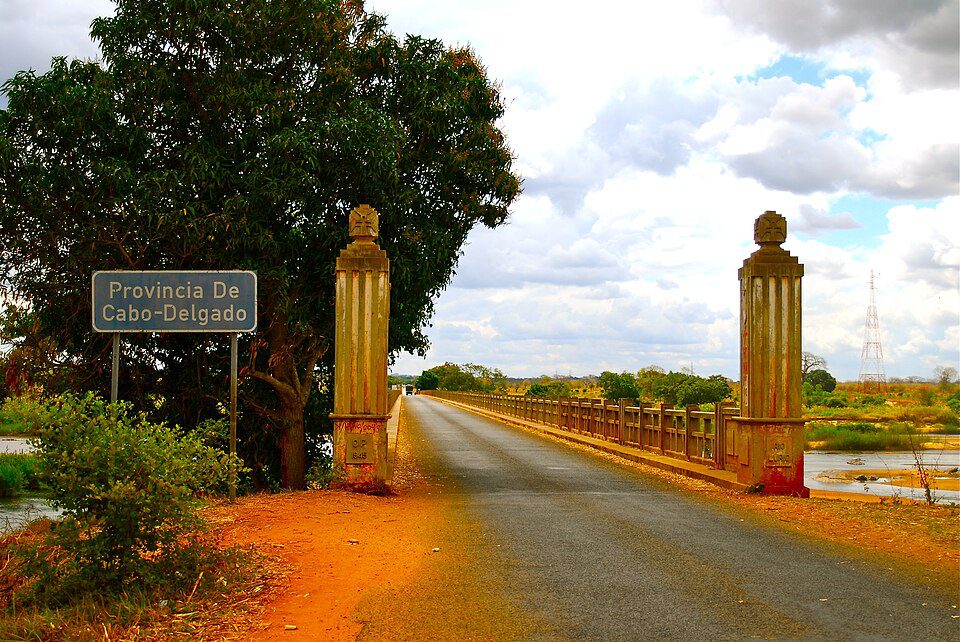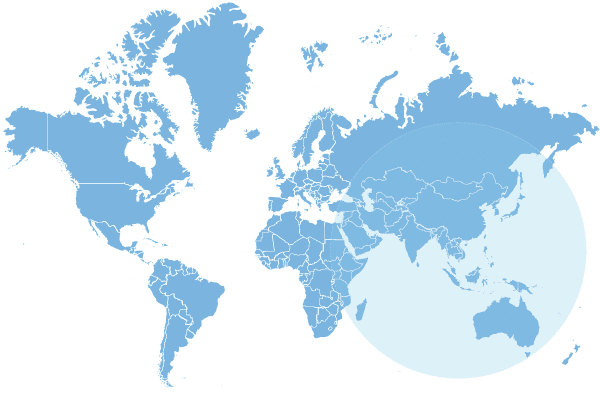Is Zanzibar an island or an archipelago? Turns out it’s both – there’s an island called Zanzibar in the archipelago of the same name. This Tanzanian territory is considered something of a natural marvel, and while it may seem far-flung to many people, it’s an idyllic spot that millions have on their travel bucket list.
Did you know that it’s smaller than some British counties? Or, that there are more than ten times the number of people living in Zanzibar than there are on the Isle of Wight? In this fact file, I’ll take you through some of the most fascinating tidbits I’ve found about this unique African archipelago.
Here are some interesting facts about Zanzibar that might just help you with the next pub quiz.
1. The Zanzibar you probably know of is an archipelago, not an island.
Let’s start by clearing up some confusion. Zanzibar is an archipelago of Tanzania that can be found off the coast of East Africa in the Indian Ocean. That means it’s actually a group of different islands that are chained together under one umbrella.
Here’s where things might get a bit fuzzy. Turns out, there’s also a main island in this archipelago that’s widely referred to as Zanzibar island! However, the official name of this island is Unguja – and, along with Pemba, it’s one of the two biggest islands in the Zanzibar archipelago.
To make things even more confusing – there’s a Zanzibar city, too! This city is also known as Stone Town. You can technically tell people that you live in Zanzibar, in Zanzibar, in Zanzibar!
2. Zanzibar island is actually fairly small.
Unguja, as the largest of the islands in the Zanzibar archipelago, is actually smaller than you might expect. It has a total land area of around 1,666 square km, which is around 643 square miles. Compare that to the largest county in the UK – North Yorkshire, which absolutely dwarfs the island at 8,654 square km, or 3,341 square miles!
Pemba, meanwhile, is around 988 square km, or 381 square miles. That’s almost exactly the same size as North Northamptonshire, and only slightly larger than Stratford-on-Avon!
3. It’s home to thousands of people.
Across the archipelago, there are more than 1.8 million people living in Zanzibar according to the 2022 census. The metropolitan population of Zanzibar island itself, however, is around 874,000 people.
Let’s compare these populations, again, with British counties! The archipelago itself has a similar population to that of Kent, Essex, and Hampshire. The island, meanwhile, has a population just smaller than that of Norfolk, and just larger than that of County Durham.
4. People have been living here for millennia.
It is believed that it has been home to humans for about 20,000 years! We have deduced this thanks to the findings of tools such as spear points from the Later Stone Age, which were discovered in the area.
Over the millennia, Zanzibar quickly became a popular trading base, with the island itself becoming a safe harbour for traders. Eventually, the area would be colonised by Portuguese explorers, keeping control of the region for two centuries, before being taken over by the Oman Sultanate.
Eventually, Zanzibar was taken over by the British Empire, until a brutal revolution led the region to be absorbed into Tanzania – it is now a semi-autonomous region.
5. It’s thought that Zanzibar was once part of Africa’s mainland.
Looking into the ancient history of Zanzibar and its geography, it’s reasonable to assume that it was once part of the continent’s mainland. Unguja and Pemba, in particular, are thought to have split away from Africa up to 23 million years ago!
Of course, many experts claim that all nations formed a supercontinent in millions of years gone by – Pangea, for example, is the name for an ancient supercontinent that would eventually split apart into the territories we now live in.
6. Zanzibar is very popular with watersports fans.
Thanks to the incredible waters and weather around the archipelago, it’s not surprising that Zanzibar has become a bit of a hotspot with fans of surfing and sailing. In particular, sites like Jambiani and Paje remain hugely popular with kitesurfers and scuba divers.
There’s also a protected marine island, Chumbe, which is accessible via boat outside of Stone Town. It’s an incredible experience for any seasoned scuba aficionados who want to get up close to some gentle marine life!

7. There are two parts to Zanzibar City, and it’s one of two major administrative districts in the region.
Zanzibar City, as mentioned, is often referred to as Stone Town – however, this is a name for just one of two sides to the island’s capital. The other side, which is separated from Stone Town via a creek, is called Ng’ambo. And, believe it or not, that name roughly translates into “‘the other side’!
Ng’ambo is actually the more modern of the two sides of the city, with Stone Town being the initial site of the Sultanate, and where UNESCO established a World Heritage site in the early 00s.
Ng’ambo started developing as a result of the bloody revolution in Zanzibar back in 1964, when the Sultan was overthrown.
8. Zanzibar has an important place in trade history.
Zanzibar was once a bustling trading hub. It supplied gold, slaves, ivory, and wood to countries such as India. It also commonly imported spices, glassware, and textiles. It was famously known as a spice island.
Modern Zanzibar, meanwhile, is more dependent on trading in fishing and agriculture, mainly thanks to its fantastic climate and high-quality soil. For example, it’s prime land for growing tropical fruit and essential crops. Plus, much of the Zanzibar diet is influenced by seafood thanks to how ubiquitous fishing is in the region! Not surprising from an island nation, of course!
9. There are lots of different languages spoken in Zanzibar.
Zanzibar is rich in diverse languages! The main language spoken in the area is Swahili. However, Arabic is also widely spoken and written – so, if you ever head over here, it is wise to learn at least a few phrases to get by! Do also remember that, locally, the language is known as Kiswahili.
However, that’s not to say you won’t hear English on the island. In particular, you’re likely to hear European languages spoken close to the tourist areas of the region, for example, as you head towards Zanzibar city. Arabic, too, is commonly spoken across the region.

10. It played host to one of the shortest wars in known history.
Zanzibar is somewhat famous for having endured the world’s shortest war ever! The Anglo-Zanzibar War took less than one hour to complete – with some historians suggesting it took as little as 38 minutes. Regardless, you can walk from one end of Leeds city centre to the other in the time it took for the conflict to conclude!
The self-declared King Khaliid was defeated, and, with British support, Hamud ibn Mohammed became sultan.
11. The Zanzibar Revolution was a devastating turning point for the area.
In December 1962, Zanzibar finally regained its independence. However, victory was short-lived as only a month later; the Arab ruling elite was overthrown by an African majority during a bloody revolution.
In April 1964, Zanzibar’s established republic merged with Tanganyika. Zanzibar remains to this day a semi-autonomous region.
Sadly, conflicts have continued to occasionally break out in Zanzibar. In 2001, for example, protestors against government forces were met with violent backlash from armed police.
12. People spend Tanzanian Shillings in Zanzibar.
Given the region’s links to Tanzania, it’s reasonable to understand why Zanzibar uses the Tanzanian Shilling. However, in some places across the island and archipelago, you can use US dollars.
However, it’s often best to try and exchange British Pounds for TZS before you travel. At the time of writing, one Pound is worth 3,585 Shillings – but, remember, the exchange rate is always changing. You’ll need to check the latest rates with your bank and/or any travel exchange bureaus you trust before you travel.
The TZS has weakened against GBP over the past decade and a half. In December 2008, for example, you could get 1,920 TZS for one GBP. Recent trends show that the value of TZS vs. GBP appears to be continuing in the same direction.

13. Zanzibar is increasingly popular with British and European visitors.
Various studies and data show that Zanzibar is fast becoming a major resort for Brits and Europeans to head to on holiday! It’s thought that the majority of international travellers to the region come from France and Poland.
According to British Muslim Magazine, December 2024 saw a 30.5% increase in visitors year on year. And, more than 166,000 foreign tourists had visited the region in the first two months of 2025 alone. The UK is fast becoming one of the major distributors of tourism to the region!
What’s also interesting is the fact that most people visiting Zanzibar from overseas are women – just over 52%!
14. The UK government warns against non-essential travel to some areas of the Tanzanian region.
The British government’s current advice on travelling to Tanzania also affects that of Zanzibar. At the time of writing, official foreign travel advice states that only ‘essential travel’ should be considered to specific parts of the region. This is largely due to ongoing extremism along Tanzania’s border with Mozambique, via the province of Cabo Delgado. You’re advised against travelling unless it’s essential within 20 km of this area.
If you’re travelling to Zanzibar, you’ll need a full British passport that expires at least six months after the date you intend to arrive – you’ll need a blank page in your passport, too, as well as a working or tourist visa.
Working in the region (including Tanzania) will also require you to claim a permit from the office of the Tanzanian Prime Minister. Be warned – staying beyond your visa can result in arrest, fines, and deportation.
You’ll also need to be checked for Mpox, and have a yellow fever vaccination if you’re travelling from a risk region (several countries within Africa and South America). When travelling to Zanzibar in particular, you must arrange inbound travel insurance via the Zanzibar Insurance Corporation. You can visit with cover for up to a maximum of 92 days. There’s more information available at Visit Zanzibar.
15. There’s no British Embassy in Zanzibar.
It might surprise you to learn that there’s no official British Embassy in Zanzibar – however, if you’re a British national and need help while visiting the region (or, of course, living there), you can reach out to the British High Commission in Dar es Salaam, based in Tanzania.
The full address for the High Commission is Umoja House, Hamburg Avenue, PO Box 9200, Dar es Salaam (Dar es Salaam), Tanzania. You’ll only be able to access services by appointment only, so it’s worth making an enquiry online.

16. There are several ways to get to Zanzibar from the UK.
The fastest and most cost effective way to get to Zanzibar island from the UK is via plane. For example, you can get regular connections via Heathrow Airport, Birmingham Airport, Ringway Airport, London Gatwick, and Manchester Airport. Airlines such as Qatar Airways, British Airways, and Turkish Airlines all offer connections between the UK and Zanzibar.
On average, you can expect to be travelling for between 13 and 15 hours, usually with a layover in between. In some cases, you may need to take a ferry from the Tanzanian mainland as a final connection. Expect to spend upwards of £290 on tickets out here (at the time of writing).
17. One of history’s most popular entertainers came from Zanzibar – with a link to one of Britain’s biggest bands.
Freddie Mercury, or as he was born, Farrokh Bulsara, was born in Stone Town, Zanzibar! He was arguably one of the region’s most famous exports – the singer was the frontman for legendary British rockers Queen before his untimely passing in 1991.
18. It’s always hot, hot, hot in Zanzibar.
Zanzibar is a tropical island, meaning it is blisteringly hot here across the year – not surprising, then, why so many Europeans flock to the archipelago every winter for some break from the deep freeze! The region has two rainy seasons, however, one running between March and May, and the other between October and December.
The hottest time of year in Zanzibar is, on average, February! It’s here when you’ll experience an average daily temperature of around 28°C, with July actually being the coldest month – though not by much! The average temperature in July is around 24°C.
Now, let’s look at rainfall. If you thought Britain was rainy, you’ve never been to Zanzibar! Here, you can expect up to 2,000 mm of rainfall every year – whereas it’s up to 1,400 mm on average, yearly, in the UK! Might want to pack a brolly just in case…
19. There are some majestic giants on Prison Island!
Prison Island, which you can access via the water just across from Stone Town, is home to some incredible fauna – specifically, giant tortoises! It’s here where you’ll be able to spy Aldabra tortoises, in particular, who actually have free roam of the island.
The Aldabra is one of the biggest tortoise species in the world, and can live up to 120 years old. They measure up to four feet long on average, meaning if you’re visiting the islands out here, it’s unlikely you will ever miss them! Aldabras can also be found in the Seychelles and down in Madagascar, too. There have been big conservation efforts to try and increase tortoise populations across several African islands.

FAQs about Zanzibar
In which country is Zanzibar?
Zanzibar is technically a part of Tanzania. It remains a semi-autonomous state that’s technically an archipelago in the Indian Ocean, though many people use the name to refer to the main island. To confuse matters, the capital city is also called Zanzibar – but, it’s also known by its two halves – Stone Town and Ng’ambo, which translates to ‘The Other Side’.
Is Zanzibar good for tourists?
The British government currently warns against anything barring essential travel to Tanzania in general at the time of writing. That said, Zanzibar is a generally safe place to travel and is a beautiful place for tourists to visit – it’s increasingly popular with British travellers. When travelling, remember that it is best to not leave your luggage unattended, and it is always best to travel with someone else and have a trusted guide show you around!
Why is Zanzibar so famous?
Zanzibar is known for many things, although it is particularly well-known for being a spectacular spice island! This is due to its farming and processing of spices such as turmeric, cloves, cinnamon, lemongrass, nutmeg, black pepper, and more! It’s also famous for its incredible weather – it’s genuinely boiling here all year round.
Further reading:
https://facts.uk/tag/Africa
https://wikitravel.org/en/Zanzibar
https://wheretianatravels.com/what-not-to-do-in-zanzibar/
Do you know any fun facts about Zanzibar? Share them in the comments below!






